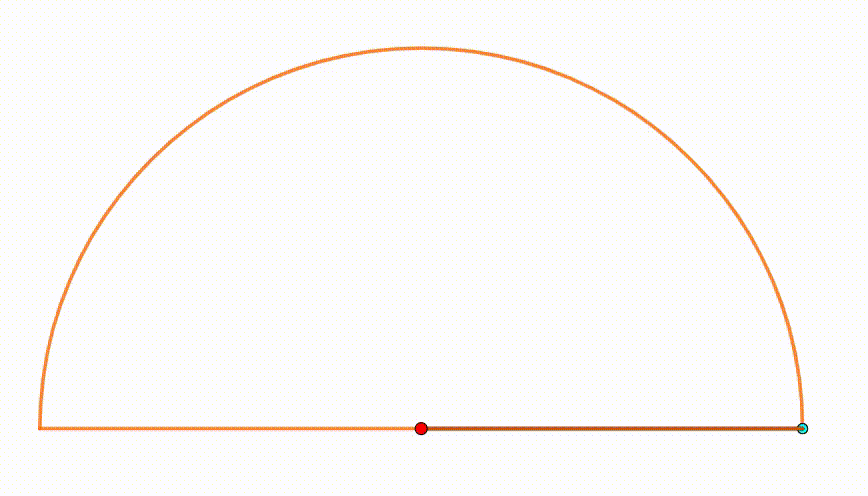Dynamic Geometry: P65
 The diagram shows an orange semicircle with radius
. Two congruent cyan circles are freely moving and share the same
-coordinate. Both circles are tangent to each orther and internally tangent to the orange semicircle. Using the three centers, we drawn a black triangle. When the area of the black triangle is
maximum
, the ratio of its area to the radius of one cyan circle can be expressed as
, where
,
and
are coprime positive integers.
and
are square-free. Find
.
The diagram shows an orange semicircle with radius
. Two congruent cyan circles are freely moving and share the same
-coordinate. Both circles are tangent to each orther and internally tangent to the orange semicircle. Using the three centers, we drawn a black triangle. When the area of the black triangle is
maximum
, the ratio of its area to the radius of one cyan circle can be expressed as
, where
,
and
are coprime positive integers.
and
are square-free. Find
.
The answer is 10.
This section requires Javascript.
You are seeing this because something didn't load right. We suggest you, (a) try
refreshing the page, (b) enabling javascript if it is disabled on your browser and,
finally, (c)
loading the
non-javascript version of this page
. We're sorry about the hassle.
Let the center of the semicircle be O , the horizontal distance between O and the two centers of the circles be a , and the radius of the two circles be r . By Pythagorean theorem ,
a 2 + ( 3 r ) 2 a 2 ⟹ a = ( 1 − r ) 2 = 1 − 2 r − 8 r 2 = 1 − 2 r − 8 r 2
The area of the triangle is given by
A d r d A 1 6 r 2 + 3 r − 1 ⟹ r = 2 1 ⋅ a ⋅ 2 r = a r = r 1 − 2 r − 8 r 2 = 2 r 1 − 2 r − 8 r 2 2 r − 6 r 2 − 3 2 r 3 = 0 = 3 2 7 3 − 3 Putting d r d A = 0 For r = 0 Since r > 0
Therefore A is maximum, when r = 3 2 7 3 − 3 . Then
r A = r a r = a = 1 − 2 r − 8 r 2 = ( 1 − 4 r ) ( 1 + 2 r ) = 3 2 ( 4 4 − 4 7 3 ) ( 2 6 + 2 7 3 ) = 1 6 2 ( 1 1 − 7 3 ) ( 1 3 + 7 3 ) = 8 3 5 − 7 3
Therefore p + q − m = 3 5 + 7 3 − 8 = 1 0 .